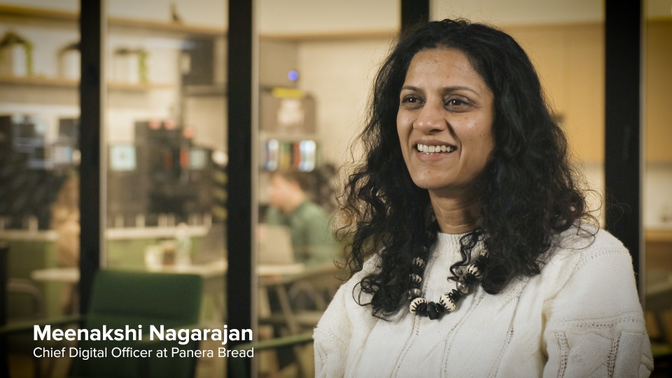
How to build ROI in before you launch your next campaign

“If you want extraordinary results, you need to do something different,” says Udi Ledergor, Gong’s Chief Evangelist and former CMO.
Udi, the author of the newly released Courageous Marketing, said that too often campaigns are built on guesses, stakeholder preferences, or recycled creative that feels “safe.”
“By the time anything becomes a best practice, everybody’s doing it—and it stops working,” he said in his interview on the Insights Unlocked podcast.
Marketing performance isn’t just a matter of optimization—it’s a matter of timing.
Campaigns are launched, underperform, and then teams scramble to improve metrics after the fact. But the opportunity to influence results was weeks—or months—earlier, during strategy, creative development, and audience validation.
ROI isn’t saved by a dashboard. It’s designed into your process.
Let’s explore what goes wrong when teams wait to test, how leading marketers build smarter from the start, and what you can do right now to make every campaign more effective—before it ever goes live.
Why optimizing for ROI after launch falls short
Marketing often measures performance after the campaign hits the market—but that’s also when your biggest decisions have already been locked in.
Creative is already produced. Media is already live. Timelines can’t be moved. At that point, optimization becomes a form of damage control—not a lever for impact.
Without customer feedback early in the process, teams risk investing in ideas that sound great internally but fall flat in the real world. And no amount of budget reallocation or creative swapping can fully fix that after the fact.
But getting customer feedback doesn’t have to slow you down.
“At Panera, we don't have the luxury of time,” says Andy Parquette, Senior UX Designer at Panera Bread, in an Insights Unlocked podcast interview. “We do a discovery, run a usability test, and use that as our North Star. The feedback has to be fast and actionable.”
How to build ROI into your campaign process
High-performing marketing teams are changing how campaigns are built. They’re not just testing after launch—they’re validating before creative is finalized or media dollars are committed. This gives them clarity, confidence, and a competitive edge.
1. Use real feedback—not internal assumptions
Creative that works in a boardroom doesn’t always land with customers. Run clarity and resonance checks early to see how real people interpret your messaging, not just how stakeholders feel about it.
Panera redesigned its catering and kiosk flows by directly observing customers. The team used rapid testing to uncover real behavior—and built features based on it, not assumptions.
“We tested our catering flow because customers were using the wrong tab on our site,” Andy said. “That insight led directly to a change in navigation—because people were struggling, and we saw it firsthand.”

2. Validate creative directions before production
Messaging and visuals that look good internally may still fall flat. Compare versions side-by-side and get direct audience feedback on which creative concept drives both emotional connection and clarity.
“I love the idea of using more tools to really get to what we’re looking for,” Andy said. “And if a test shows a message isn’t landing—we can change it fast. That’s the power.”
3. Make the full journey testable
It’s not just about the ad. It's the landing page, the offer, the flow—all of it matters. Use usability testing to simulate the entire customer experience and catch drop-off points before launch.
“We observed people in our cafes who couldn’t figure out how to add a cookie at the kiosk—while staring at a tray of cookies,” Andy recalled. “That kind of disconnect costs you, even in small ways.”
4. Segment messaging to match motivations
Not all audiences think alike. Use rapid tests to see how different personas respond to the same message. Tailor by need, not just demographic.
“Popular bundles became a hit on Panera Catering because customers didn’t know what to order for 50 people. We built a flow that used inputs like dietary needs and headcount—and created a seamless experience,” Andy said.
GUIDE
Maximize marketing ROI—before you waste another dollar
5. Budget for experiments—before you need them
“I had a budget line item called marketing experiments—5% to 10% of my program budget,” Udi said. “Why? Because any channel that’s working now will stop working eventually. You need to be testing what’s next before you need it.”
Many campaigns underperform not because the team failed to execute, but because they didn’t explore new approaches early enough. Or everyone else follows your success and the advantages you once had no longer exist or the cost per lead becomes too expensive. Setting aside budget for testing emerging channels, formats, or ideas gives you room to adapt before ROI starts slipping.
6. Test, learn, and then amplify
Purna Virji, a globally recognized marketing strategist and author of High-Impact Content Marketing, joined us on the Insights Unlocked podcast to share her perspective on building smarter, more sustainable campaigns.
As a principal consultant at LinkedIn and former global learning lead at Microsoft, Purna brings deep expertise in content strategy, paid and organic integration, and audience-first marketing—all essential for teams aiming to maximize ROI in a noisy, fast-moving landscape.
For example, she said, you can test messaging on your own social channels organically to see what resonates before you then scale with paid ads. This approach not only reduces risk—it increases efficiency.
“You can do something that costs $0 and makes your existing dollars work harder,” Purna said.
Purna said that LinkedIn found that using both paid and organic together increased ad conversion likelihood by 61% and reduced cost-per-conversion by 12%.
“Your company page should be an authentic extension of your brand, but still in service of your audience,” Purna said. “Start by asking, what do they want to hear—not just what you want to say.”
Insights from teams doing it right
In addition to Panera Bread’s story above, Zenni Optical also used feedback to validate its checkout experience before launch, leading to a 900% increase in guest checkout sales and double projected revenue.
And Sage optimized messaging clarity and usability on key landing pages before rollout, resulting in a 22% lift in conversions and a 31% increase in form completions
Gong pre-funds marketing experimentation with a dedicated line item, Udi said. When a podcast appearance sparked unexpected traction, they had the data—and budget—ready to capitalize on it.
Summary and key takeaways
Too many campaigns wait to optimize until the performance signals arrive. But ROI is built—or lost—much earlier. Here’s how to stay ahead:
- Test messaging and creative direction before launch
- Validate emotional clarity with real audience feedback
- Simulate the entire journey, not just the asset
- Segment your message by motivation, not just persona
- Plan (and budget) for experimentation
- Use organic as a test lab before putting spend behind it
Standing out isn’t just about being bigger, louder or more frequent—it’s about being sharper, more relevant, and deeply attuned to what your audience actually needs.
“It’s not that attention spans have shrunk,” Purna said. “It’s that our tolerance for mediocrity has never been lower. If you want to stand out, you have to deliver value instantly.”

See how your messaging stacks up
Before your next campaign goes live, find out how your message performs against the competition—with real-time audience feedback. This free test gives you a low-risk, high-return way to validate your creative.





